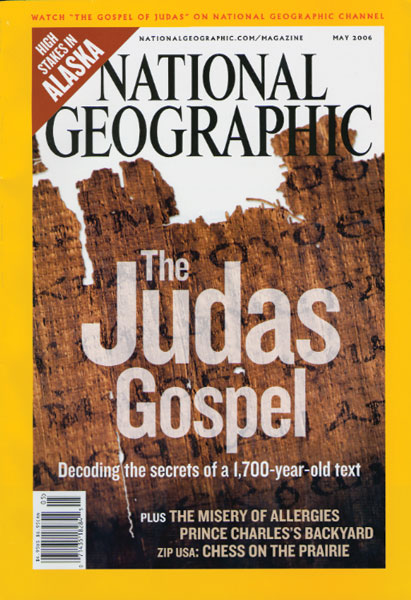First Person: Sensationalizing Gnostic Christianity
Is all the recent hype about the Gospel of Judas really justified?

A story on the new Gospel of Judas, released by the National Geographic Society at a news conference a week before Easter, appeared on the front page of almost every newspaper in the world the day after it was announced. The promotion was a masterful display of professional hype by National Geographic—two books, a major article in its magazine, a TV special, an exhibit in Explorers Hall and the new gospel’s own Web site.
Was all this justified? James Robinson, the distinguished editor of the Nag Hammadi codices that include several Gnostic gospels similar in many ways to the newly released gospel, called the Gospel of Judas a “dud.” For the National Geographic Society, however, which paid over $1 million for the right to publish it, the Gospel of Judas is the greatest thing since sliced bread.
The reason is that the Gospel of Judas paints a different picture of Judas from the one portrayed in the New Testament. In the latter, Judas is the arch-betrayer, the traitor who identified Jesus to the Roman authorities with a kiss. His motive was money; in the Gospel of Matthew, the amount is specified: 30 pieces of silver.

In the Gospel of Judas, on the other hand, Judas’s motive is quite different. Here, we are told, he identified Jesus to the authorities at Jesus’ request, enabling Jesus to escape his physical body and enter heaven as pure spirit.
In the National Geographic presentation, the Judas of this Gnostic gospel is an alternative view to that of the canonical Gospels.
Already a library member? Log in here.
Institution user? Log in with your IP address.

